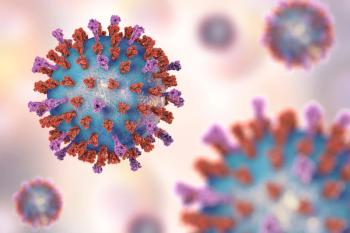
Investment Trends in Women's Health Are Driving Growth in Health Care Innovation
Venture capital investments in women's health are growing, with innovation looking beyond traditional avenues.
With health care companies drawing 25% of the overall funding market over the last few years, women's health represented 2% of the $41.2 billion health companies received in funding in 2023, explained Jennifer Radin, MPH, MBA, principal, Deloitte Consulting LLP, during Asembia's AXS24 Summit in Las Vegas. Women have been underrepresented in the design and delivery of health care, as well as in health care investment for many years, according to Radin.
While venture capital (VC) investments in women's health fell by 27% from 2021 to 2022, Radin noted that this is less than the decrease in health technology (tech) funding and overall funding in that same timeframe. But then, between 2022 and 2023, women's health rebounded with 5% growth.
“While 5% might not feel like a very significant growth number, it outpaced health tech funding overall, which fell 31% in the same period,” Radin said. “Investors have long viewed women's health as a niche market. In fact, just 4% of biopharma research and development spending goes towards female-specific conditions.”
According to Radin, more than a third of the women's health market is focused on breastfeeding, fertility, pregnancy, and contraception. However, women's health is significantly broader than these areas alone.
“A growing number of startup companies are trying to address those broader needs. In fact, more than 60% of women's health-focused companies were founded in just the last 5 years,” Radin said. “Over these past 5 years, of $1.8 billion in VC investments [for these startups], 56% went to fertility and maternal health, 25% to [general] health, 10% went to menstruation, 6% to menopause, and only 3% to mental health.”
However, Radin noted that more recently, there has been a change in these trends.
“While fertility and pregnancy accounted for over half of total dollars invested in 2022, 23% of these dollars in 2023 went to newer women's health categories,” Radin said. “So, the trend is heading in the right direction, and we're really excited to be here to make sure that that continues.”
According to Radin, the Dobb’s decision by the Supreme Court in 2022 has placed a lens on the need for a greater focus on women's reproductive health. Recently, there has also been a societal focus on the need to address gender disparities in the workplace, which has been a result of new legislation and economic initiatives in this area. Additionally, there has been a steady increase in women-owned VC funds, as well as women entrepreneurs. In 2024, 76% of women's health companies have a female founder and/or a female lead, according to Radin.
“The business case for women's health is very clear,” Radin said. “We make up 50% of the population. And, I always like to say, we create 100% of the population, although that may change going forward. But for now, women also make up 60% of the paid workforce and over 65% of the unpaid workforce.”
For these reasons, ensuring women have access to high quality, affordable, female-centered care creates a more sustainable economy and society, Radin explained.
“So, what does care designed for women look like? Well, women are really challenged with inequities in access, diagnosis, and treatment for all the conditions that affect our populations,” Radin said. “For many chronic conditions, these conditions often take longer to diagnose in women [than men]. Therefore, the symptoms can become more severe as a result, and by the time the condition is diagnosed, the situation is more acute.”
For example, women experience the symptoms of a heart attack differently than men, with symptoms such as back pain, stomach pain, or even jaw pain occurring. However, these symptoms are not the typical and very well-known symptoms men experience with a heart attack.
“We all need to educate ourselves to recognize these different symptoms [for women]—from first responders all the way through the whole population,” Radin said. “We're learning through research that women's immune systems operate differently than men’s, and thus COVID-19 and flu symptoms, for example, may be more severe, and autoimmune disorders may be more complex and take longer to diagnose.”
Furthermore, there is the additional layer of gender-specific conditions, such as menopause or endometriosis, Radin explained. Most of these female-specific conditions do not have contemporary approaches for diagnosis or treatment. “With these conditions, there's been a historic narrative that these are ‘just a part of life’ for women,” Radin said.
However, female-specific conditions can have an impact on workforce productivity challenges, which can result in a significant impact on the global economy.
“There are a number of systemic challenges perpetuating this. Reimbursement challenges are a common barrier both for innovators and for women seeking care. In some cases, there just aren't enough consistent billing codes for conditions that are unique to women. Complex diseases like endometriosis, which impacts 10% of the US population, can take multiple years to accurately diagnose,” Radin said. “Interestingly, until November 2023, there were only 9 [Current Procedural Terminology billing] codes [for female-specific conditions]. Today, there are over 100, but before, there were many women seeking care who frankly couldn't get it. Now, with expanded coding access, this will expand access for thousands of women.”
REFERENCE
Radin J. Advancing Equity for Women’s Health – Are We Gaining Momentum? AXS24 Summit; Las Vegas, NV; April 28-May 2.
Newsletter
Stay informed on drug updates, treatment guidelines, and pharmacy practice trends—subscribe to Pharmacy Times for weekly clinical insights.




